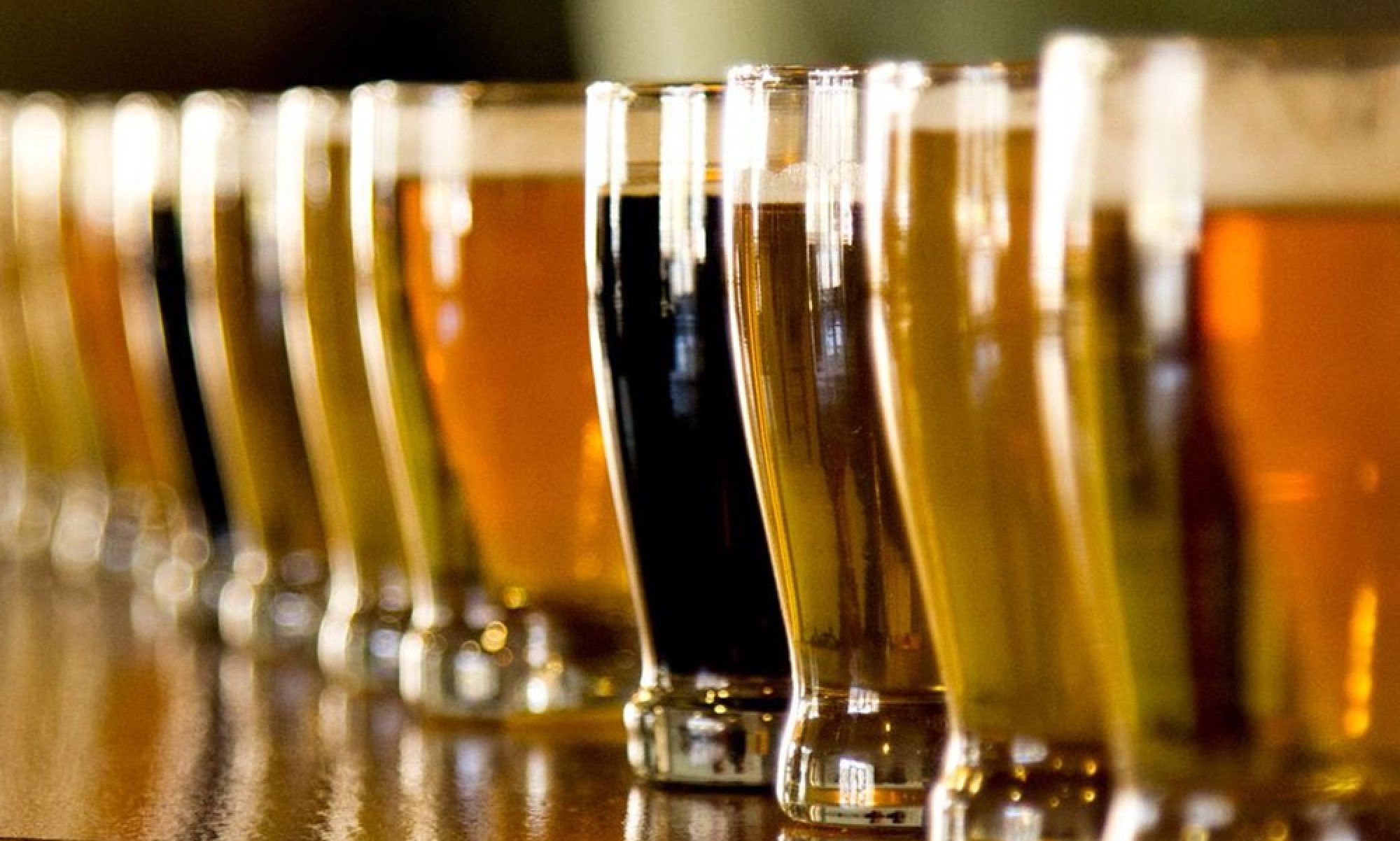One of the features I’ve always missed in my adapted-for-brewing stainless steel kettle was the volume markings that are most purpose made kettles.
Knowing the volume in your kettle is really useful for things like measuring evaporation rate, making sure your volumes are what your recipe estimated, etc. I had a spoon with gallons scratched on it, but it looked awful, and became useless when I replaced my bazooka screen with a custom-made false bottom.
I toyed with the idea of adding a sight glass, but it wouldn’t have been cheap, and looked like it would be had to clean and a haven for contaminating bacteria to live in.
I was excited to learn of a technique called electrolytic acid etching. As you might guess from the name it involves using electricity and acid to permanently etch steel. It sounds impressive and intimidating, but this is something you can easily and inexpensively do yourself.
The first step is to mark and stencil the inside of the kettle. I found this to be the most demanding a time-consuming part of the project. After carefully making sure the kettle was level I ran a strip of blue tape down the inside and added water and marked the level. After some trial and error I found a crayon worked best in the wet environment. At first I added 1/2 gallon at a time, but after a couple of gallons I felt confident enough to use a ruler and math to mark the rest of the levels, then added a couple more gallons as a double-check.
The next step involved carefully taping out wide and narrow hash marks at each gallon and half-gallon mark leaving a gap down the middle where I would go back after etching the hash marks and put a number in the middle. My original intention was to find some adhesive stencils at the nearest craft store and use those, but I could not find any that I liked and for what they cost, I wasn’t going to compromise. I ended up making my own number stencils by printing a style I liked on to adhesive paper and carefully cutting them out with an X-ACTO knife. Custom stencils are easily doable!
To do the actual etching we only need the electricity of a 9v battery and the acid of a 5% vinegar, which most likely you have already. You also need a little table salt to act as an electrolyte and make the vinegar conductive. To apply the acid and current you’ll also need a Q-tip and wire. I used an old 9v battery lead connected a section of speaker wire so it reached the entire work surface. I taped the positive wire to the side of the kettle and wrapped negative wire around the cotton of the Q-tip so the acid solution would be touching the wire. This polarity ensures we are moving metal form the kettle to the Q-tip, i.e. etching. The reverse polarity would be trying to add metal to the kettle, i.e. electroplating.
First, be sure to work in a well-ventilated area. The fumes are noxious, and stainless steel often contains chromium, which you do NOT want to breathe. Luckily we are working with very small amounts of materials so with plenty of ventilation you’ll be fine.
Second, I strongly recommend testing this process on another piece of metal to get the hang of the process. Once you are ready to etch Dip the Q-tip in your vinegar solution and touch the kettle you should hear some sizzling or see some bubbling. It only takes a few seconds of contact to etch. I went over each area about four times.
If you are worried about corrosion, don’t. Stainless steel and aluminum both naturally form oxidized coatings on their surfaces when exposed to oxygen. This oxidized layer is what protects them from rust and corrosion. A few seconds after etching, the surface of the etched area will oxidize again and will be the same as the rest of the kettle. If you are really worried about it you could lay a cloth or paper towel soaked in a 5-10% citric acid for about 30 minutes to ensure it is fully passivated. Me, I’d just say RDWHAHB.







